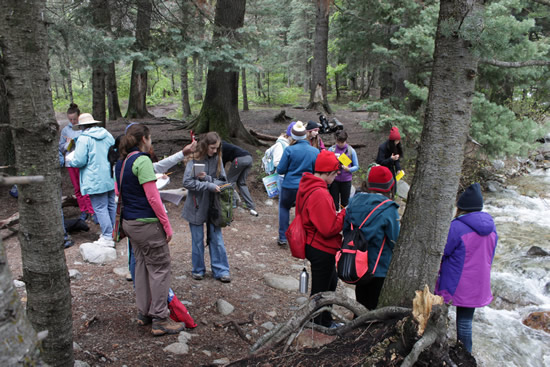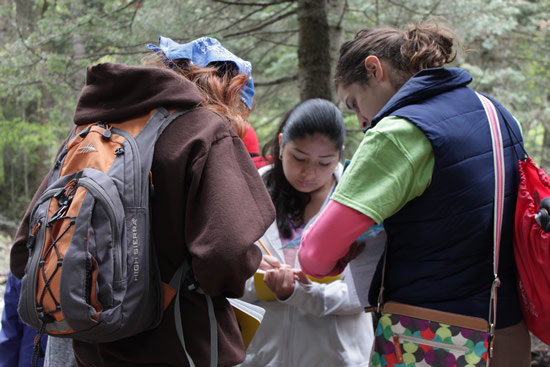News Article
May 29, 2015
iUTAH WaterGirls Program Engaging Middle Schools in Field Experience
How do we engage middle school students in science? It’s easy, DO science with them! We all know that science is not a collection of facts in a textbook, it is a process of discovery. iUTAH WaterGirls was developed as a collaboration between Salt Lake Community College, Salt Lake City School District, and iUTAH to get middle school girls out into nature exploring their local outdoor environment and learning for themselves about water in Utah’s canyons.
Studies show that the middle school years are a critical time when female students begin to lose interest in a STEM career. An affective method to retain female students’ interest in science and desire for a career in STEM is laboratory and field experiences. Exposure to field research helps students experience the true nature of science and research, while nurturing a sense of curiosity about the world around them.
During WaterGirls, students visited field sites in Little and Big Cottonwood Canyons to assess the health of streams and watersheds near their homes. On each field day students were tasked with collecting water quality data, including pH, temperature, electrical conductivity, total dissolved solids, and dissolved oxygen. They also collected and identified macro-invertebrates found living in the streams. Weather observations were completed, using hand-held instruments to record temperature, wind, and humidity, as well as cloud and precipitation data. Students discussed and analyzed their data to determine how these values change at different sites and in different canyons, what the data tells them, and what that data tells them about health of these streams and watersheds. Scientists, including hydrologists, ecologists, meteorologists, biologists, geologists, and chemists, led the students in their sampling and acted as mentors. Volunteers from Salt Lake Community College, Salt Lake City School District, University of Utah, and the Colorado Basin River Forecast Center, all taught the students and shared their expertise.
Following the field experience, students attended a wrap-up and reflection session to communicate their findings to audiences of their choosing. This could include their fellow students, their families, the general community, or others. The goal of this step was to help students improve communication skills and demonstrate their interest in science to others. By communicating the impact of water systems, students begin to create ownership of both their environment and their interest in STEM fields.



« Back to list of all news articles


